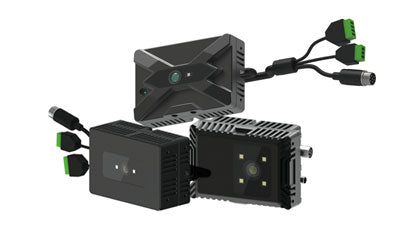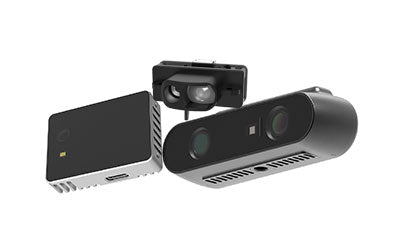TOF Smart Security:Intrusion Detection & Intelligent Behavior Analysis

How can TOF technology be used for smart security and behavior analysis in homes or businesses?
With the rapid advancement of urbanization and smart technologies, traditional security systems face increasing challenges. Modern monitoring demands go beyond simple video recording, requiring real-time, high-precision intrusion detection, behavior analysis, and dynamic security management. TOF (Time-of-Flight) (https://en.wikipedia.org) technology-based smart security systems offer a brand-new solution with their unique depth-sensing capabilities. This article explores TOF security applications, advantages, and future development trends.
What does smart security do?
Smart security refers to systems that leverage modern information technology, IoT, AI, video surveillance, sensors, and big data analytics to monitor, alert, and manage the security of homes, businesses, or public spaces in real-time.
In simple terms, it uses 'intelligent means' to protect property and people, improving response speed and defense efficiency.
🔑 Key Features:
-
Real-time monitoring: Collects live images and status information through cameras and sensors.
-
Intrusion detection: Intelligently identifies suspicious behaviors or unauthorized personnel, triggering alerts.
-
Remote control and management: Allows users to monitor feeds, control locks, and manage alarms via smartphones or computers.
-
Automated response: AI and preset rules enable automatic locking, alarm activation, and notification.
-
Data analysis and prediction: Analyzes historical data and behavior patterns to enhance security strategies and preventive capabilities.
Overall, smart security enhances safety, reduces manual monitoring costs, and provides rapid, effective protection during emergencies.
1. Limitations of Traditional Security Systems
Traditional systems rely mainly on 2D video surveillance and infrared alarms. While sufficient for basic security in the past, their limitations are increasingly apparent in complex modern environments:
-
High false alarm rate: 2D cameras are easily affected by lighting changes, shadows, moving leaves, or small animals, causing frequent false alarms.
-
Privacy concerns: Standard cameras capture detailed facial and activity information, raising privacy and compliance risks.
-
Poor environmental adaptability: Cameras and infrared devices perform poorly in low light, strong sunlight, or adverse weather, reducing detection reliability.
-
Single-function limitation: Traditional systems are passive and lack predictive, real-time analysis capabilities.
Thus, modern security requires technology that is all-weather, high-precision, and low-interference. TOF-based smart security addresses these challenges, enabling accurate intrusion detection and intelligent behavior analysis.
2. TOF in Intrusion Detection
TOF technology emits infrared or laser pulses and measures the return time to generate high-precision 3D depth data. This enables intrusion detection to evolve from passive 2D surveillance into intelligent, proactive defense, improving both accuracy and adaptability.
-
Abnormal behavior recognition: TOF depth data captures human contours, motion paths, and speed, distinguishing normal behavior from potential threats such as unauthorized entry or loitering, reducing false alarms compared to traditional cameras.
-
All-weather, low-light monitoring: TOF sensors function in darkness or low-light conditions, making them ideal for basements, warehouses, and parking lots.
-
Precise spatial coverage: Capable of monitoring multi-level spaces like staircases, corridors, offices, or large campuses, avoiding false triggers from small objects while ensuring no blind spots.
-
Proactive defense and smart integration: Combined with AI and security platforms, TOF systems can trigger alarms and automatically activate locks, lighting, and sirens upon detecting intrusions.
With these capabilities, TOF transforms security systems into smart, proactive, all-weather intrusion defense platforms, enhancing safety, reliability, and management efficiency.
3. Behavior Analysis and Security Management Optimization
TOF-based smart security systems not only detect intrusions but also perform high-precision behavior analysis and dynamic security management, shifting from reactive response to real-time prediction and intervention.
1. Personnel Behavior Analysis
TOF sensors capture 3D point cloud data, tracking posture, movement trajectories, and speed. AI algorithms can classify various behaviors:
-
Fall detection: Monitors body center-of-mass changes to detect falls, immediately triggering alerts—ideal for hospitals, nursing homes, and schools.
-
Abnormal loitering: Detects extended presence in restricted areas and records locations for security personnel.
-
Running or rapid movement: Detects unusual speed in crowded areas like malls or stations to prevent theft, chasing, or emergencies.
-
Posture recognition: Analyzes 3D skeletal models to identify hand-raising, climbing, or crouching actions for accurate threat detection.
2. Predictive Alerts
TOF systems enable proactive warnings:
-
Abnormal behavior prediction: Machine learning models analyze historical behavior to anticipate potential risks, like crowding hazards.
-
Multi-level alarm linkage: Triggers on-site alarms, notifications, camera alerts, and management system pushes simultaneously.
-
Prevent escalation: Detects climbing or boundary breaches in warehouses or factories to alert security staff.
-
Intelligent logging: Automatically records events and behavior trajectories for post-analysis and accountability.
3. Crowd Dynamic Management
TOF monitors large crowds in real-time, providing actionable insights:
-
Crowd density analysis: Generates real-time heatmaps for high-density areas.
-
Flow direction monitoring: Tracks movement direction and speed to predict congestion or risk zones.
-
Event optimization: Guides security deployment and access control during large events.
-
Multi-scenario applicability: Suitable for subways, airports, malls, stadiums, and exhibition halls.
4. Data-Driven Security Decisions
TOF data supports management decisions:
-
Security strategy optimization: Improves patrol routes, monitoring layout, and alarm strategies.
-
Risk prediction and prevention: Anticipates high-risk periods and areas for proactive measures.
-
Performance evaluation: Generates reports to assess security efficiency and resource allocation.
-
Scientific management: Integrates with AI platforms for smart decision-making in buildings, campuses, and cities.
With TOF technology, smart security can monitor intrusions, analyze behavior, predict risks, manage crowds, and support decision-making, achieving comprehensive proactive protection.






